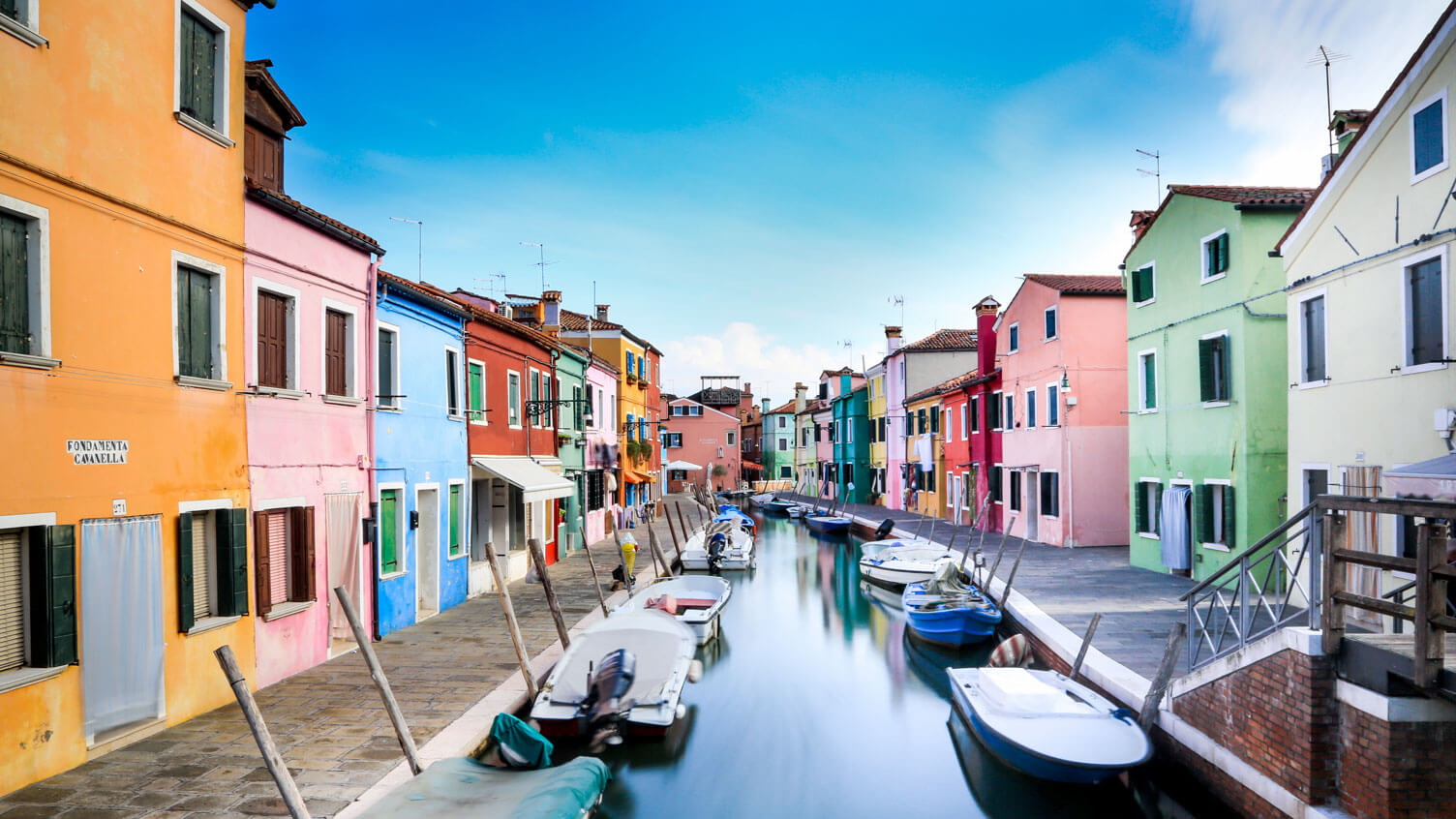TORCELLO
Just 10 km from Piazza San Marco, in the north-eastern part of the Venice lagoon, is the island of Torcello. Today it is an island of vegetable gardens and is inhabited by only a few dozen people, but 1500 years ago it was the cradle of the entire Venetian civilization: in the year 638 the Catholic bishop of Altino, at the time the main Roman city in the area, under the pressure of the invasion of the barbarian hordes, he moved to Torcello with a good part of the Altino population, thus giving life to the first large lagoon settlement.
Torcello had its greatest development between the 7th and 10th centuries, reaching 20,000 inhabitants, thanks to the prosperity of its trade. Over the following centuries it progressively and unstoppably lost its importance, as all the main productive activities were now centralized in nearby Venice. Of the numerous noble palaces, various churches and monasteries that once crowded the island, only a few surviving monuments remain today.
Things to see:
- the cathedral dedicated to Santa Maria Assunta, founded in the time of Heraclius, emperor of Byzantium, around 639 is among the oldest Venetian-Byzantine buildings left in the lagoon. Inside you will be enraptured by the beauty and colors of the mosaic of the Last Judgment
- the church of Santa Fosca, near the cathedral, built around 1100
- the Devil's Bridge
- the throne of Attila, legend has it that the king of the Huns sat here the Torcello Museum with its very precious archaeological remains from Roman times. established in 1870, its purpose is to collect the artistic heritage of Torcello.
How to reach Torcello:
- line 14 from Venice San Marco
- line 12 from Venice Fondamente Nove
BURANO
Burano is one of the islands of the archipelago of the Venetian Lagoon. It is located north of Venice, near Torcello, and is famous for the production of lace.
The island, with more than 4,000 inhabitants, has a leaning bell tower, which can be seen from afar.
From a tourist point of view, Burano is famous for its colorful houses. The inhabitants are forced to paint the facades of their houses frequently. Legend has it that the facades of the houses of Burano are colored because the local sailors painted them to be able to recognize them on foggy days.
Things to see:
- the Lace Museum, located inside a Gothic Palace, once the headquarters of the famous Lace School and adjacent to the Palazzo del Podestà, now the Town Hall
- the Church of San Martino Vescovo and the adjacent Chapel of Santa Barbara
- for lovers of fishing and ancient crafts, visit the Vecchia Pescheria (Pescarìa Vecia), as the Buranelli call it, it is the most loved place by photographers and romantic couples looking for breathtaking sunsets over the Venice lagoon
- the Casa di Bepi, the most colorful of the island of Burano and of course take some souvenir photos.
How to reach Burano:
- line 12 from Fondamenta Nove
- line 14 from San Marco
MURANO
Murano is the largest island in the lagoon, after Venice, with a population of 30,000, and is made up of seven islands.
It became very important for the artistic working of glass, thanks to a decree of the Serenissima Republic of 1295 which sanctioned the transfer of the furnaces from Venice: more than once, in fact, they had caused serious fires, aggravated by the fact that at the time the buildings in Venice were especially in wood. Concentrating the glassworks in Murano helped the Serenissima, jealous of an art that had made it famous throughout the world from its origins, to better control its activity. The glass masters were forced to live on the island and could not leave Venice without a special permit.
Murano is not only famous for its glass, but also because here is one of the oldest churches in the lagoon: the Basilica of Santa Maria and San Donato.
Things to see:
- the cathedral of Santi Maria e Donato
- the church of Santa Maria degli Angeli
- the church of San Pietro Martire
- the Glass Museum
- Palazzo da Mula
How to reach Murano:
- line 4.1 from Venice Fondamente Nove
- line 4.2 from Venice Fondamente Nove
- line 3, direct to Murano from Venice P.le Roma and Ferrovia
- line 7 from Venice San Marco (from April to September)
- Alilaguna from Venice Marco Polo airport
